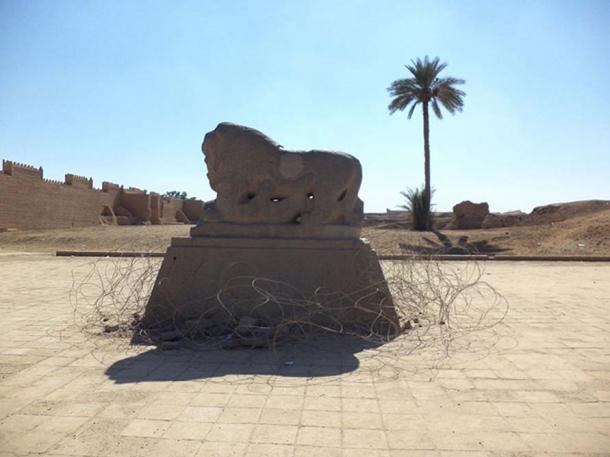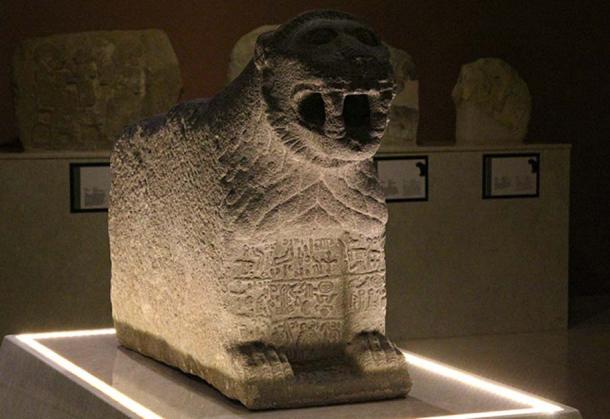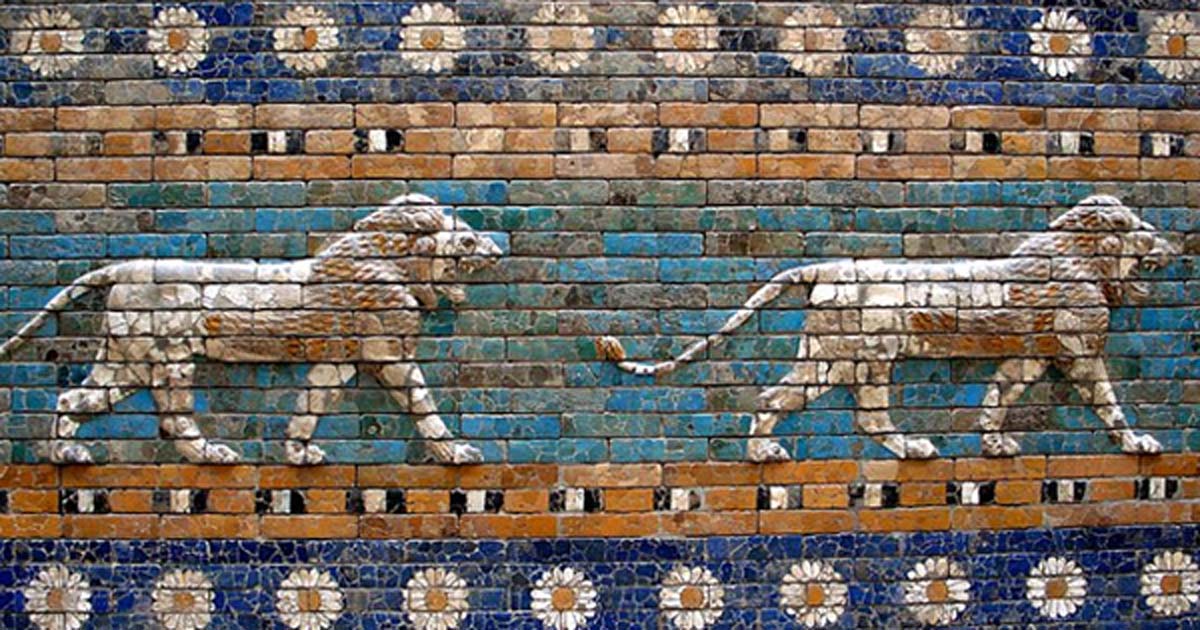The King of Beasts That Have Witnessed the Rise and Fall of Ancient Civilizations
Lions are often said to be the kings of all animals. They are also a symbol of power and popular archetypes for influential rulers. Most civilizations have depicted these regal animals in their artwork as an important attribute of power. Many beautiful statues and amazing reliefs with the graceful creatures have survived from ancient times, but some of them stand apart for their fascinating stories.
If someone is ''like a lion'', it means (s)he is very brave, wise, and powerful. Few would be offended at being compared to this majestic animal. Lions became decorations for some of the most remarkable monuments, palaces, and temples. In ancient times, the appearance of a lion statue increased a site’s prestige. When they were associated with rulers, they made the person more memorable.
The Last King of Babylon
Many lions were depicted on reliefs and statues in Babylon, but the best-known example is the Lion of Babylon which was discovered in 1876. It was considered a masterpiece of art since its creation. For a time, it was believed to have been made during the reign of the famous King Nebuchadnezzar II (695 – 562 BC), but more recent information paints a story that is even more captivating. During his reign, King Nebuchadnezzar fought with Hittites. It seems that after one of the battles the king took the amazing statue to his capital city as a war treasure.
- Unravelling the Tragic Story Behind the Impressive Lion Monument of Lucerne
- Mansa Musa: The Richest Man in History
- The Ishtar Gate and the Deities of Babylon
In July 2016, local officials announced that they will protect this famous statue with a security barrier- so many people wanted to touch it that it was damaging the iconic artifact. It is also interesting to note that this lion became a symbol of the Iraq Football Association.

The Lion of Babylon. (CC BY-SA 3.0)
Alexander the Great’s Lion for a Friend
Another interesting lion statue is the stone lion which is believed to be part of the ''Lions Gate” of the Parthian cemetery in Hamadan, Iran. However, there is much more to the story of this weathered statue. Legends say that Alexander the Great is the one who brought it there.
Alexander was deep in grief after the tragic death of his friend and companion Hephaestion. Hephaestion died in 324 somewhere in Persia, and many researchers suggest the lion was made to commemorate this fallen friend. The place where it was originally left in Hamadan is still disputed. Perhaps the funeral ceremony took place in this area, however, evidence for Hephaestion’s tomb has never been found. The lion was made in the Hellenistic style and is one of the greatest symbols of the region and an important part of the local landscape.

Remains of the 'Lions gate' of Hamadan. (Public Domain)
A Hittite Hieroglyphic Lion
The Maraş lion was carved by a Hittite artist who lived near the end of that civilization. What makes this beautiful lion especially interesting is its hieroglyphic inscription.
It was discovered in the city now known as Kahramanmaras (previously Maraş) in 1883. Today, the statue is in the local museum, but it was originally located by another statue which was not inscribed. The inscriptionless statue can be found in the Archaeological Museum in Istanbul, Turkey. The lion of Maraş is made of basalt and is almost a half meter (1.64 ft.) high and nearly a meter (3.28 ft.) wide. It is a masterpiece of ancient art. The carving was so perfectly made that small details like hair are still well-preserved. This lion seems to have Assyrian influences.

The Lion of Maraş. (CC BY-SA 3.0)
The inscription says the lion belonged to Halparuntiyas, King of Gurgam, son of Laramas, grandson of Halparuntiyas, great-grandson of Muwatalli. The text is a typical inscription showing deep feelings and loyalty to deities and honoring ancestors. The inscription’s content allowed researchers to date it back to the 9th century BC.
- Ancient Babylonian use of the Pythagorean Theorem and its Three Dimensions
- The Posterity of Neo-Babylonia: The Dramatic Reign of Nebuchadnezzar II
- The Magnificent Ishtar Gate of Babylon
A Guard for Palmyra
Until recently, there was a mesmerizing limestone lion that stood in Palmyra which was made during the 1st century AD. The statue weighed 15 tons. This lion was discovered in 1977 by a team of Polish archaeologists led by Dr. Michał Gawlikowski. The statue was found in pieces and it took a very long time for it to be restored. However, the team of Polish researchers found a cure for the ancient lion. As Bartosz Markowski described:
''In 2000, a project was presented for a new display of the statue. It addressed two issues, one of which was to recreate the original form of the lion as a relief representation. Another question was to design a supporting construction that would ensure proper statue balance while satisfying accepted aesthetic standards of reconstruction. The statue had to be dismantled and remounted on a new foundation connected to a reinforced concrete wall backing the sculptured fragments and acting as a counterbalance for the forward tilting tendency. Stone blocks on either side of the lion were supposed to imitate the wall, against which the statue must have been displayed originally. The new restoration project also called for a reconstruction of the missing curls of the mane in order to improve the overall aesthetic effect. Two of these missing elements with carved curls had been replaced in the past with unworked blocks and the third had not been restored at all. Work on the project started in 2005.''

The Lion of Al-lāt (first century AD), which stood at the entrance of the Temple of Al-lāt (destroyed in 2015) (Public Domain)
The lion became a victim of the massive destruction in Palmyra in 2015. However, archaeologists have already announced that it will be recovered and returned to its glory again soon.
Ancient lion statues and depictions are some of the greatest attractions left from the ancient world. Thousands of people take pictures with lion monuments every single year. People still want to touch them and be close to them. It seems that this is almost a natural instinct in humans, or at least something that has been trained and engrained over the centuries.
Top image: The Lion of Babylon from a portion of the Ishtar Gate. (CC BY-SA 3.0)
References:
Kevin Butcher, Roman Syria and the Near East, 2003.
Nicholas J. Saunders, The two Thousand Year Obsession to find the Lost Conqueror, 2006.
The Lion Of Allat In Palmyra New Museum Display Project by Bartosz Markowski, available at:
http://www.pcma.uw.edu.pl/fileadmin/pam/PAM_2004_XVI/248.pdf
Prized Lion of Babylon joins list of crumbling Iraqi antiquities, available at:
http://www.al-monitor.com/pulse/originals/2016/06/iraq-babylon-culture-heritage.html#ixzz4DYTfkbw6



















Comments
The carvings are really amazing. Could the fascination with lions have symbolism in the out of Africa theory and throught most of the middle east. It would have been a fearsome enemy. Would lions be more likely to attack around the time in august coinciding with the Leo constellation?
Troy Mobley